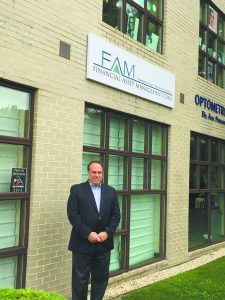 By Scott Kahan
By Scott Kahan
Paying for college can be very complicated, especially if families haven’t saved enough. With many private colleges now costing close to $60,000 per year, parents can expect to spend over $250,000 for a four year degree. State schools can cost as much as $25,000 per year, or higher for out-of-state residents. How do families pay for all this? And what if parents have more than one child? Below, Scott M. Kahan, Certified Financial Planner professional and President of Chappaqua’s Financial Asset Management Corporation, offers suggestions for getting one’s financial planning under control and making the whole college process a little less stressful.
1. Consider your family’s overall financial situation. “College is one goal among many,” Kahan emphasizes to parents. “Retirement is [also] a major goal that should not be sacrificed. You can borrow for college, but you can’t borrow for retirement.” For that purpose, he suggests maximizing your savings into work retirement plans such as 401Ks.
2. For optimum savings, choose the 529 Plan. Available in all states, these plans provide tax-free growth on the money put in, as long as it is used for college. The money can also be used for any immediate family member’s college expenses, meaning, if needed, a parent can take money from one child’s account and use it for another. There is no limit to the number of plans one can set up.
Additionally, using the NYS plan (www.nysaves.org), parents can deduct their contribution on their NYS tax returns ($10,000 max for married couples; $5,000 max for single parents). Says Kahan, “Families can always fund more, but only that amount is deductible.” He also recommends parents use the direct savings plan, rather than the advisor plan, since there are no additional costs built in. Keep in mind, too, that when applying for financial aid, some schools (not all) will not count the 529 as a child’s asset in the calculations. Finally, Kahan suggests grandparents and other family members consider funding these accounts as well, in order to maximize savings.
3. If you have home equity available, consider borrowing from that. Kahan forewarns: “How you do this is important.” With interest rates still low, he suggests refinancing your mortgage rather than taking out a home equity line of credit (HELOC). Why? “The reason is simple,” Kahan states. “A HELOC has a variable rate. When rates start rising, as they will before you know it, this rate will increase, and the college loan will become very expensive. By refinancing a mortgage and taking cash out, you can lock in today’s lower rates for the term of your mortgage. The cost to obtain a new mortgage may be higher, but in the long run, could save you money.”
4. Avoid borrowing from a 401K plan; again, keep retirement money separate from this process. “There could be some advantages to doing this,” says Kahan, “but if you leave your job with an outstanding loan, that loan then becomes taxable income and possibly subject to an additional 10% penalty.”
5. Beware the private student loans trap, as these loans have “low interest rates to start, but those rates can climb.” Also, considering that these are private loans, they do not necessarily provide the same flexibility with deferment and forgiveness of debt as some government loans.
6. Consider the Free Application for Federal Student Aid (FAFSA) for your child. These forms should be completed in January of the year the child enters college. Even if a given family may not qualify for financial aid, this plan will allow a parent or child to borrow money using loans available through the school and government programs.
7. Look into Stafford loans and Parent Plus loan options. Stafford loans are student loans that can have lower interest rates, depending upon family finances. Parent Plus loans are parent loans, which allow parents to borrow up to the full cost of education each year.
8. Seek out a Certified Financial Planner professional. He or she can help you identify your goals and figure out how to best execute your plan. “By taking into account all your goals and family finances, they can put you on the right path to meeting those goals,” Kahan explains.
Additionally, Chappaqua residents/parents can benefit from the Horace Greeley Scholarship Fund, www.HGSF.org, which provides scholarships to students based on financial need.
Rest assured that all information provided is confidential.
Each year, with the help of a local college financial director, Mr. Kahan also presents a seminar on how to prepare and plan to pay for college at Horace Greeley High School in Chappaqua. He can be reached at 914 238-8900 or email: skahan@famcorporation.com. FAM is located at 26 S. Greeley Avenue.
